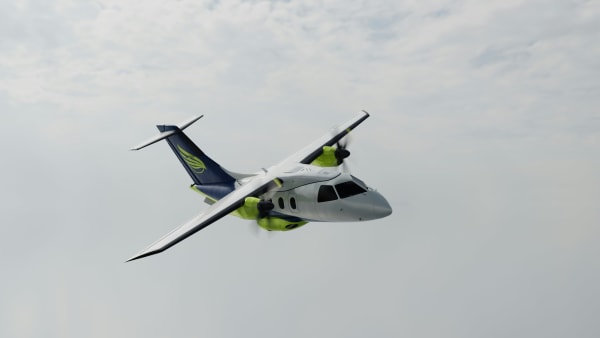The Importance of Aerodynamics Knowledge for Pilots
When it comes to the many parameters that work hand in hand to enable successful flight, one essential aspect undoubtedly stands out--aerodynamics. Aerodynamics stands as a pivotal component of aviation science and plays a significant role in flight performance, safety, and efficiency. Consequently, an in-depth understanding of aerodynamics is a key requirement for anyone who wears the badge of a pilot. In this article, we delve into the importance of aerodynamics knowledge to pilots worldwide, establishing the relevance of this knowledge and discussing the benefits derived from fully grasping this subject matter, thus strengthening the case for pilot aerodynamics knowledge.
Aerodynamics: The Core of Flight
Aerodynamics fundamentally deals with how air interacts with a moving object—an aircraft, in this context—guiding the principles of lift, drag, thrust, and weight. These four forces of flight are responsible for:
- Lift: Generated by air flowing over and under the aircraft wings, creating a lower pressure above than below, allowing the plane to ascend.
- Drag: This is the resistance an aircraft encounters as it moves through the air. Comprises of two types, namely: Parasitic (form and friction) and induced drag.
- Thrust: Generated by a plane's engines to propel an aircraft forward, overcoming drag.
- Weight: The force exerted by gravity on the aircraft pulling it towards the earth.
Understanding these forces and their interactions is what constitutes pilot aerodynamics knowledge and forms the backbone of pilot training. Now, let's highlight why this understanding is essential.
Enhancing Safety and Efficiency
The grasp of aerodynamics enables a pilot to handle complex situations that may endanger the plane, the crew, or the passengers. For instance, understanding aerodynamics would allow a pilot to manage challenges such as turbulence, wind shear, or stall conditions, ensuring a high level of flight safety. Furthermore, understanding aerodynamics can also enhance fuel efficiency, helping save both the planet and monetary resources.
Empowering Decision-Making
Knowledge of aerodynamics empowers pilots to make informed decisions during flight. This knowledge proves valuable from the take-off roll, through cruising altitude, and all the way until the wheels touch back onto the tarmac. It is this understanding that allows the pilot to make the right control inputs to enable smooth, controlled flight.
Optimizing Aircraft Performance
From the viewpoint of engineering, an understanding of aerodynamics helps with designing more efficient aircraft. However, from a pilot's perspective, comprehension of aerodynamics assists in optimizing the performance of the aircraft–by accurately controlling speed, altitude, and flight path. Understanding how aerodynamic factors impact the aircraft can help the pilot achieve optimal performance, thereby enhancing flight experience.
Understanding the Weather
Aerodynamics is also closely tied with meteorology. With a solid understanding of aerodynamics, a pilot can interpret how different weather conditions might affect a flight. This knowledge allows accurate navigation by foreseeing things like turbulence, wind speed and direction, and temperature changes—all integral facets of a safe and successful journey.
Delving Deeper: The Breakdown of Pilot Aerodynamics Knowledge
While pilot aerodynamics knowledge encompasses many aspects, there are a few key areas that especially demonstrate its importance:
Stability and Control: Understanding aerodynamics shapes a pilot's understanding about stability (the tendency of an airplane to return to straight and level flight if disturbed) and control (the pilot's ability to direct the airplane along a desired flight path). This knowledge assists pilots to maintain control of the aircraft under varying flight conditions.
Performance Factors: This includes things like angle of attack, load factor, and speed. A firm grasp on these facets of aerodynamics allows pilots to thoroughly understand the influence of these factors on the performance and safety of the aircraft.
Maneuvers: Different flight maneuvers (such as turns, stalls, and spins) require different aerodynamic principles to be put into play. For pilots, understanding these principles is essential for successfully and safely executing these maneuvers.
The Takeaway: The Value of Pilot Aerodynamics Knowledge
The importance of aerodynamics knowledge for pilots cannot be overstated. It's integral to flight safety and efficiency, decision-making in flight, optimizing aircraft performance, understanding the impact of weather, and above all, successfully and safely performing various flight maneuvers.
Certainly then, a robust understanding of aerodynamics is non-negotiable for pilots, forming a foundation upon which other flight skills sit. This reminds us that to master the art of flying, we must first master the science behind it–the science of aerodynamics. Truly, the knowledge of aerodynamics is a must-have for everybody looking to make their mark in the realm of piloting, reinforcing the need for in-depth pilot aerodynamics knowledge. Therefore, let's not just fly, but understand how and why we fly, making the skies safer and the flying experience more refined and efficient.




